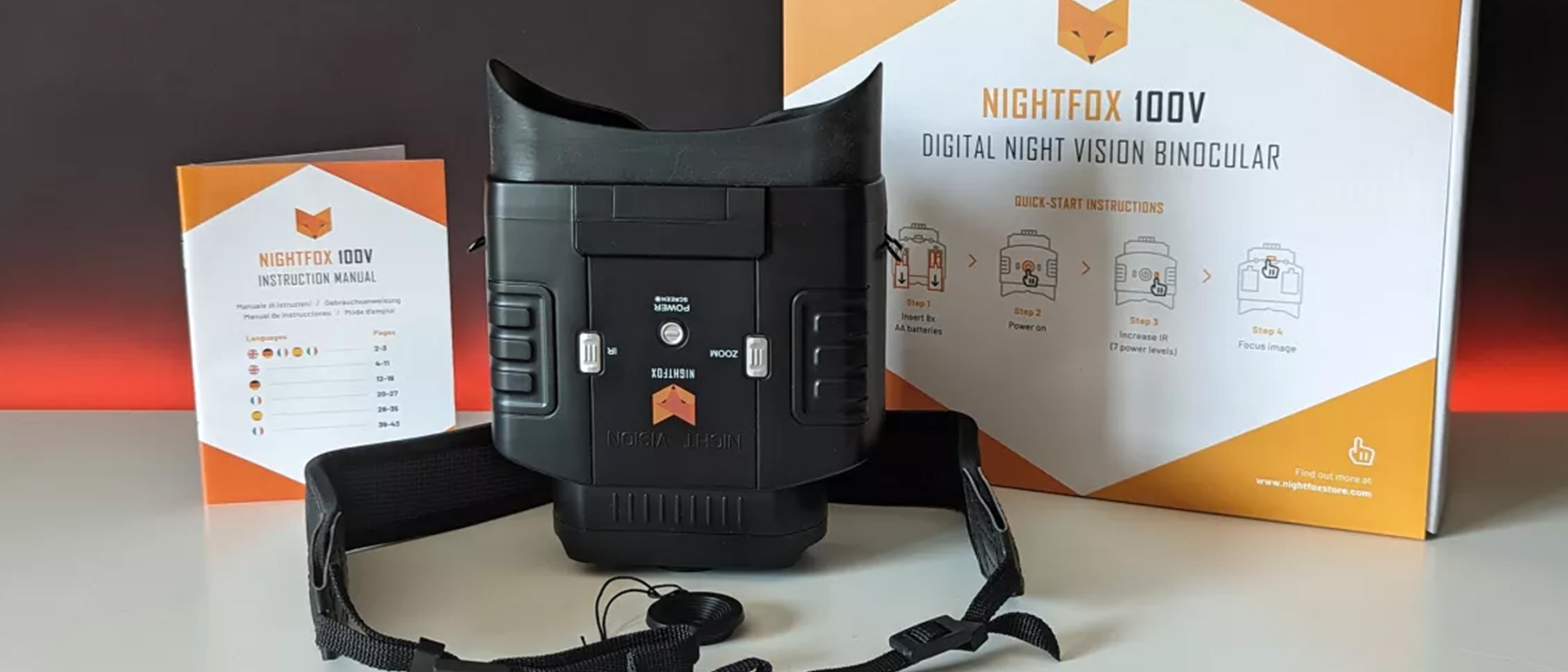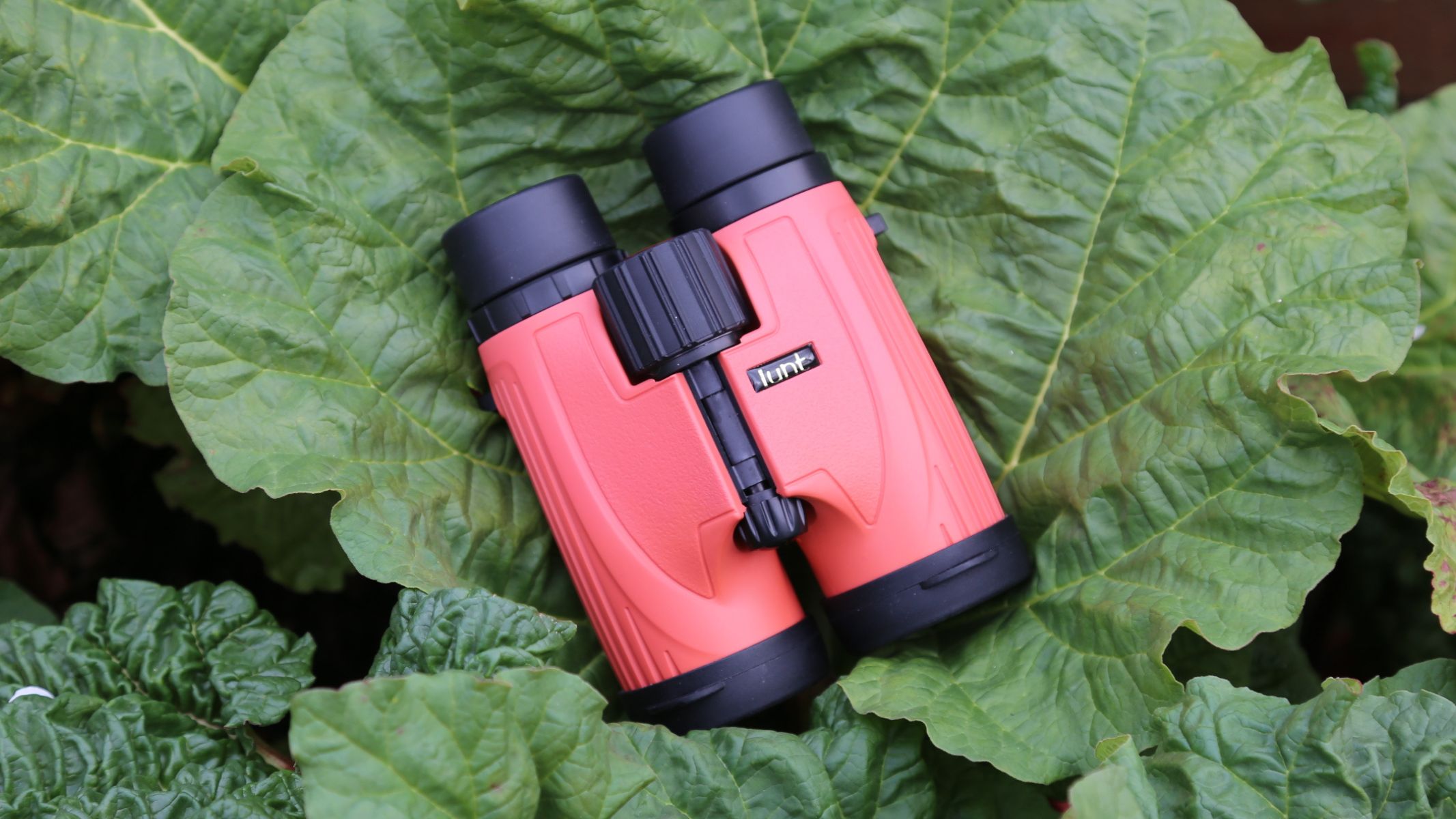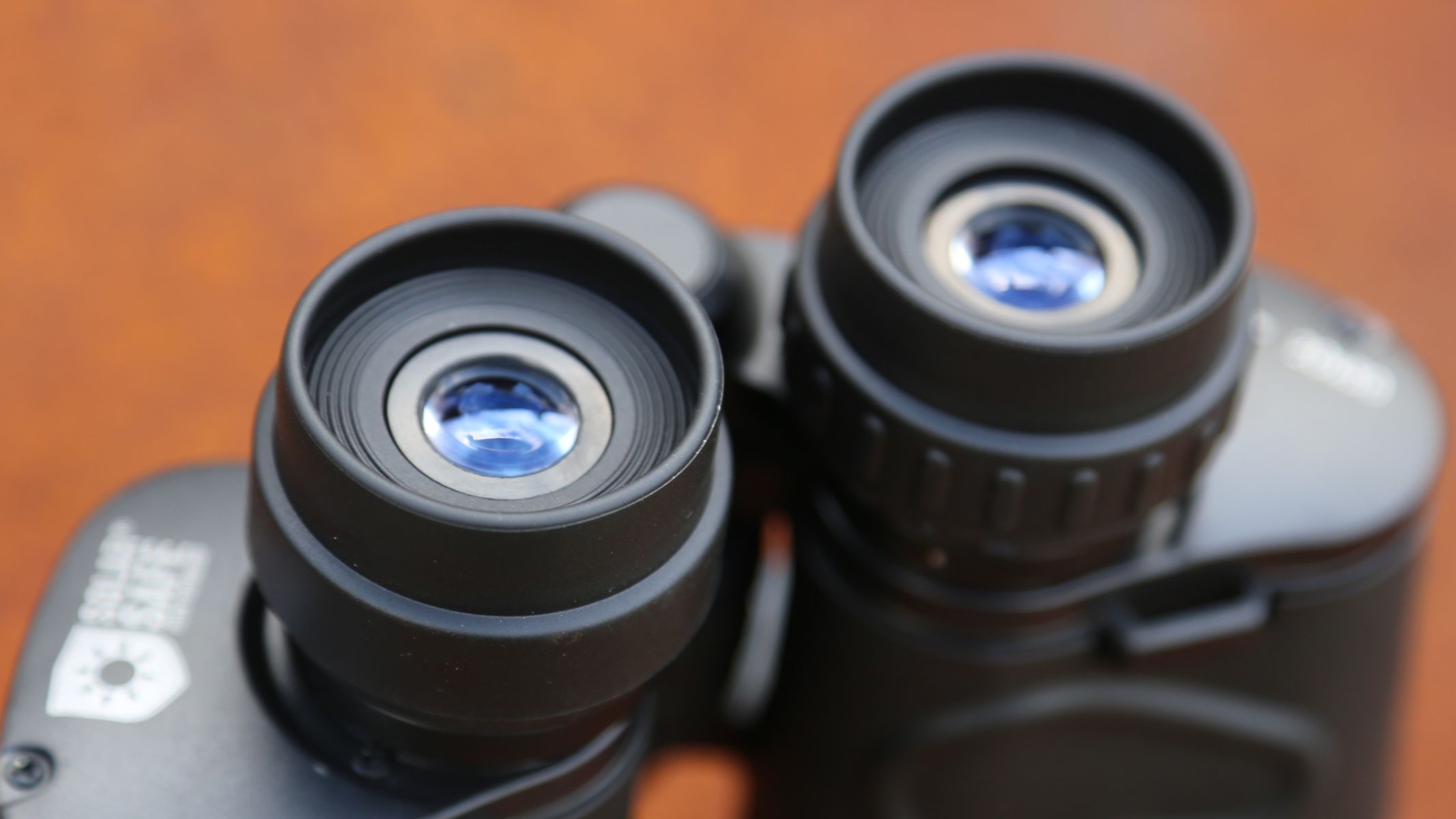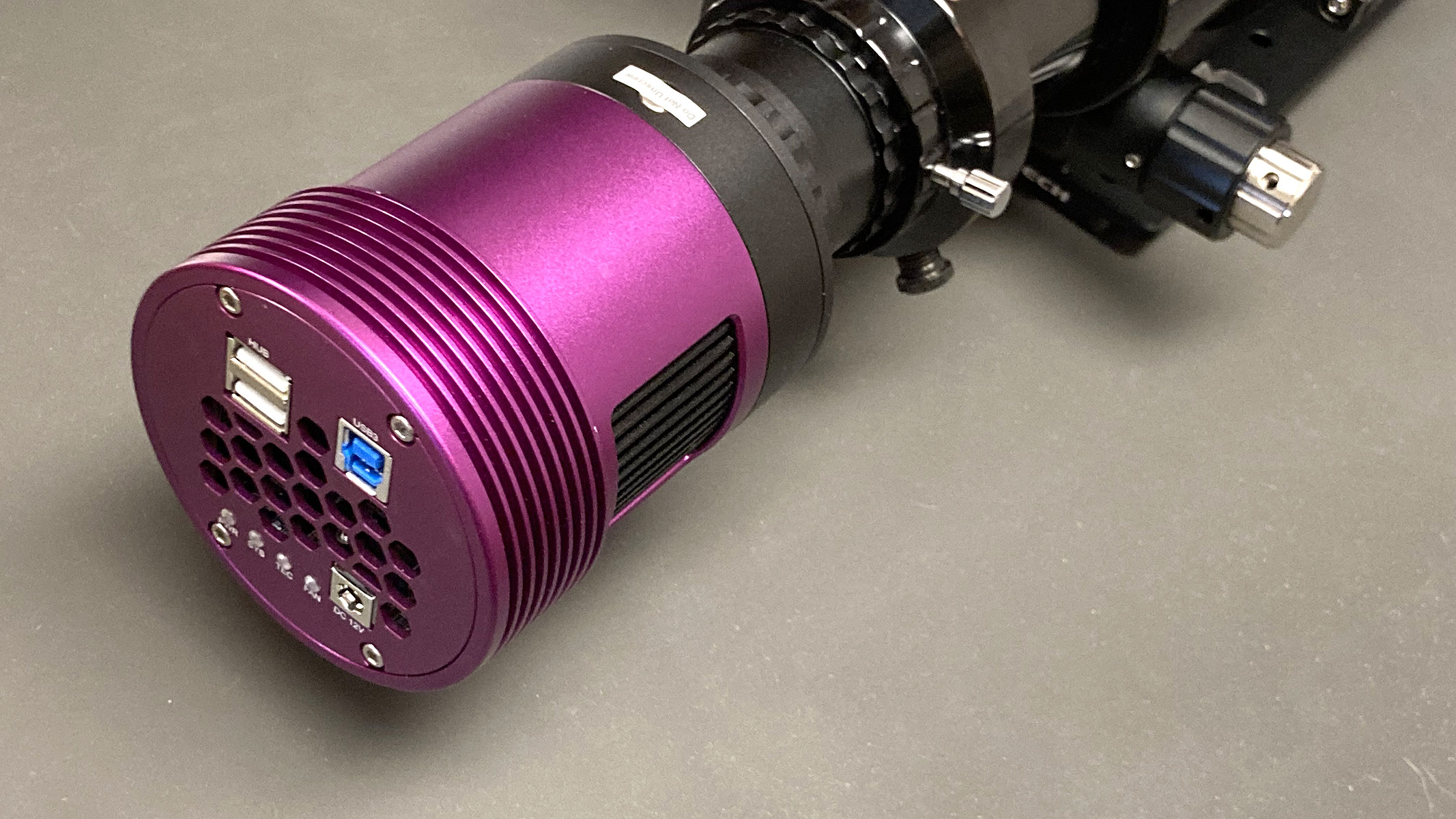Space Verdict
The Nightfox 100V is very easy to use, but we are a little frustrated with the need for 8x AA batteries and the unreliable battery level indicator.
Pros
- +
Good value for money
- +
3x fixed optical magnification & 2x digital zoom
- +
Very simple operation
Cons
- -
Requires 8x AA batteries
- -
Not head mountable
- -
No recording capability
Why you can trust Space.com
The Nightfox 100V is Nightfox's best-selling, classic device. It is marketed toward beginners looking for a simple pair of night vision goggles to enter the world of night vision, whether this be for developing photos in the dark or nature spotting in your back garden.
They are affordable — compared with more sophisticated night vision binoculars — so could make a cool gift for children. Next-level hide-and-seek games.
Sensor: 640x480
IR Range: 100m
Display: Not specified
Battery: 8x AA batteries
Battery life: Six hours approx.
Magnification: 3x
Memory card: N/A
Weight: 1.33 lb / 603g (without batteries)
Warranty: 18-month
They feature adjustable focus and numerous infrared levels to ensure maximum viewing quality and power-saving prowess.
We've reviewed the rechargeable Nightfox Swift already, so we want to see how the 100V model compares, given they cost less than half the price — we'll make comparisons throughout. Let's get started and see if they're worthy of a spot in our Best night vision binoculars guide.
Nightfox 100V Night Vision Goggles review
Nightfox 100V night vision binoculars: Design
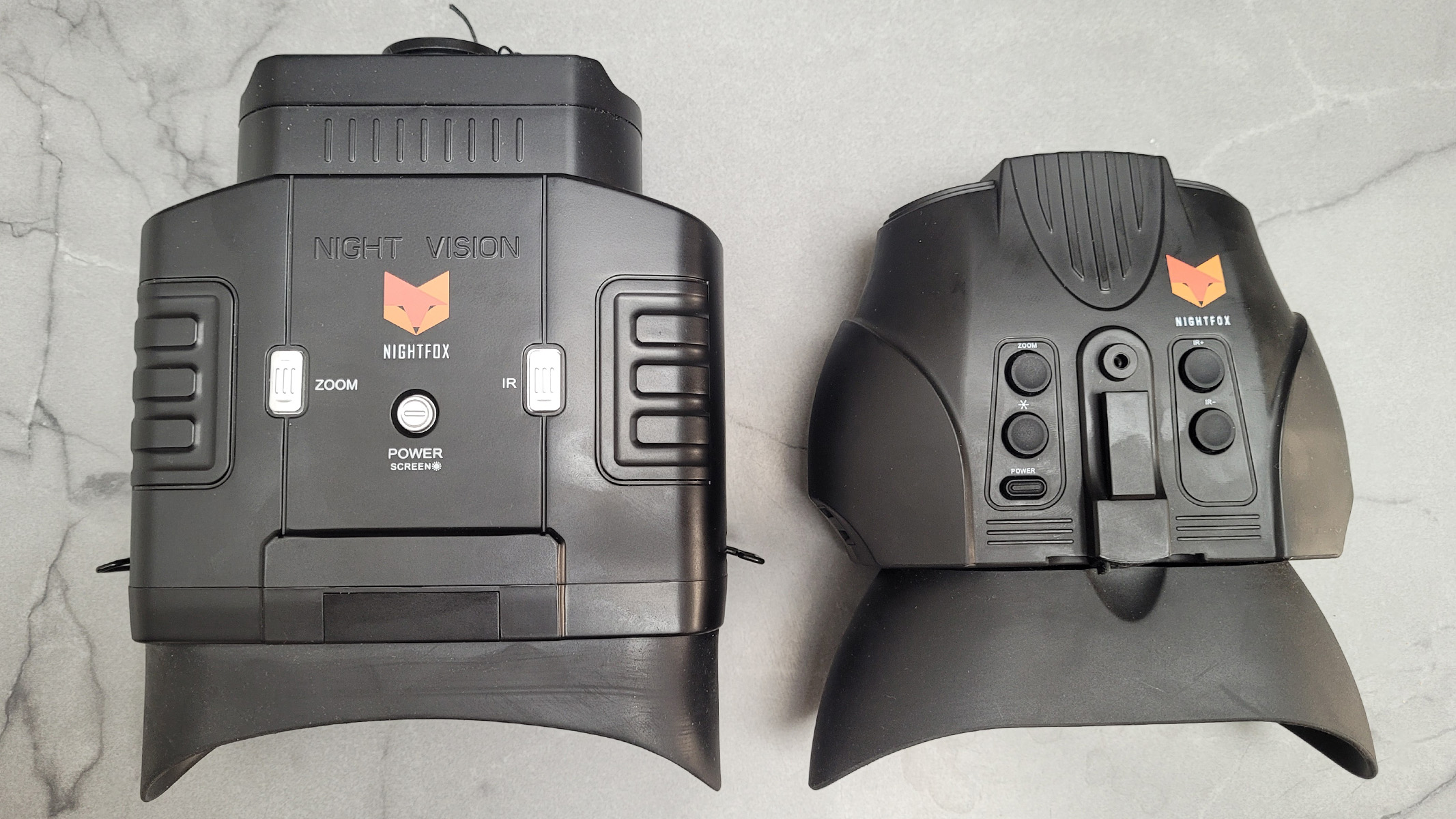
- The focus wheel is beneath and at the front of the goggles
- Widescreen monitor
- The plastic finish doesn't have a coating (which is a good thing)
Having recently reviewed the Nightfox Swift rechargeable binoculars, it's easy to compare the two instantly. The 100V is noticeably bigger and more suited to two-handed operation; the Swift was comfortable to hold with just one hand. The weight is also significantly heavier, weighing in on our scales at 1.95 lbs (889g) after we'd inserted the required eight batteries versus 0.79 lb (360g) of the rechargeable Swift model.
There are only three buttons on the 100V — one for power, one to operate the digital zoom, and one to adjust the level of infrared. The buttons are large and easy to reach, so it's OK for users with small hands. The buttons scroll through the various options; keep pressing until you get to how you want the scene to appear.
On the base of the binoculars is a thread to mount the binos to a tripod, but there is nowhere on the top of the unit to make them headmountable. This is the opposite of the Swift, which is head mountable but doesn't have a tripod screw. These are, therefore, more suited to longer 'still' viewing sessions, either on a tripod, with you lying on the floor, or leaning on a support like you'd find in a bird hide.
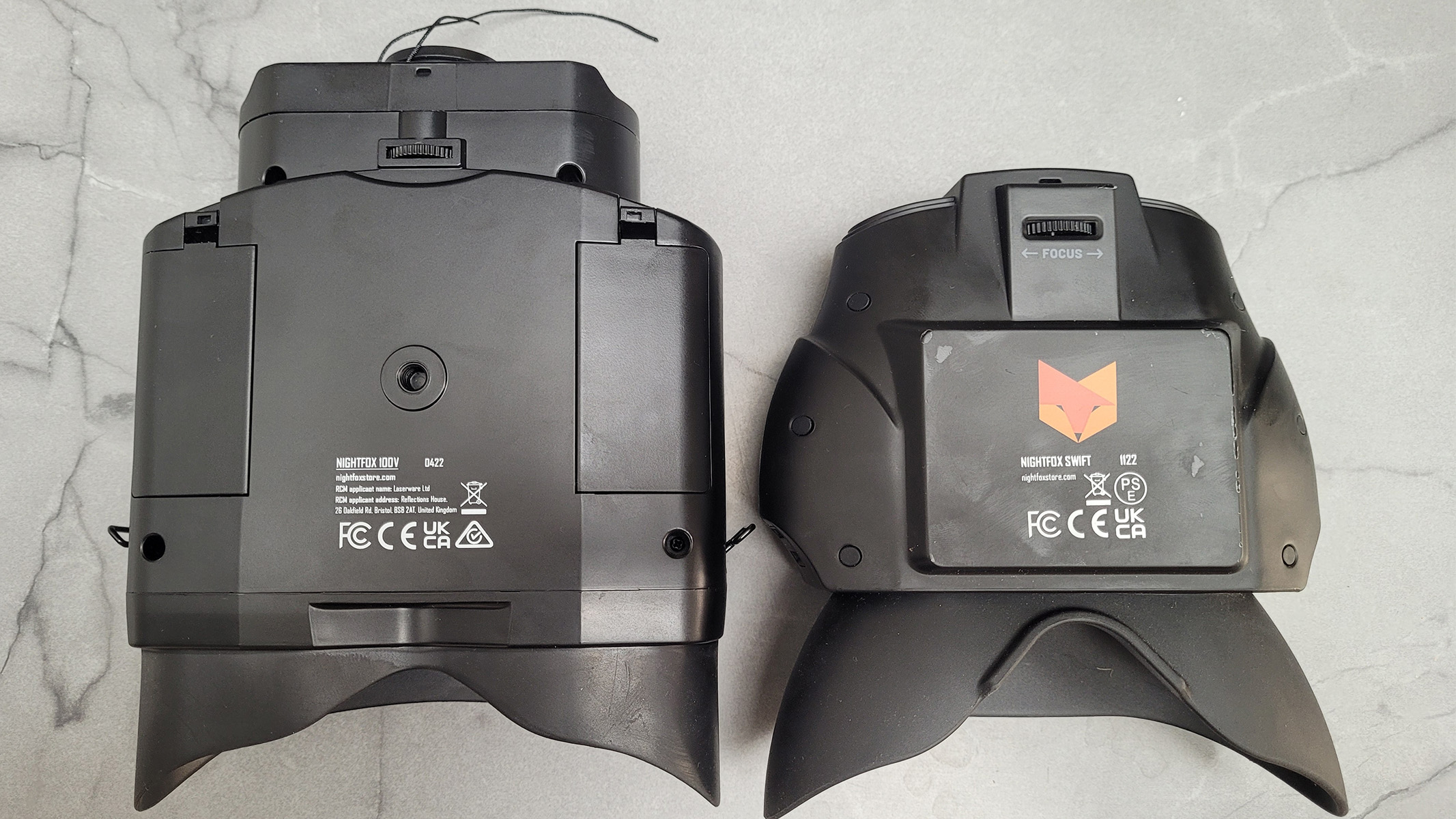
Like the Swift, the focus wheel is underneath and at the front of the binoculars. We find this an unnatural position and would prefer the focus wheel on top or in the middle at the bottom, but perhaps this is subjective.
The rubber eye guard seems to be made from a slightly stiffer rubber than the Swift, which makes it a little less comfortable to hold against your face. The fit isn't anywhere near as snug, either. We tested looking through them in the daytime, and the amount of light entering through the sides of the rubber was significantly higher in the 100V pair. As we've suggested before, if only one person uses these, you could carefully trim the rubber to make it a better fit and thus more comfortable to look through.
Unlike the Swift, there is no 'coating' on the plastic — we were pretty pleased to see this, as the extra coating doesn't add to the protection of the device, but it soon looked scruffy, even after only using them a few times in our review.
The hoops to put a neckstrap through are protruding metal 'rings' rather than being built into the body. We'd prefer if they were inbuilt so they would be more challenging to snap off, but with due care, these should be fine.
Unlike the discrete micro-USB port on the Swift, there is no hiding the two battery compartments here. Each compartment takes 4x AA batteries for a total of 8x AAs.
Nightfox 100V night vision binoculars: Performance
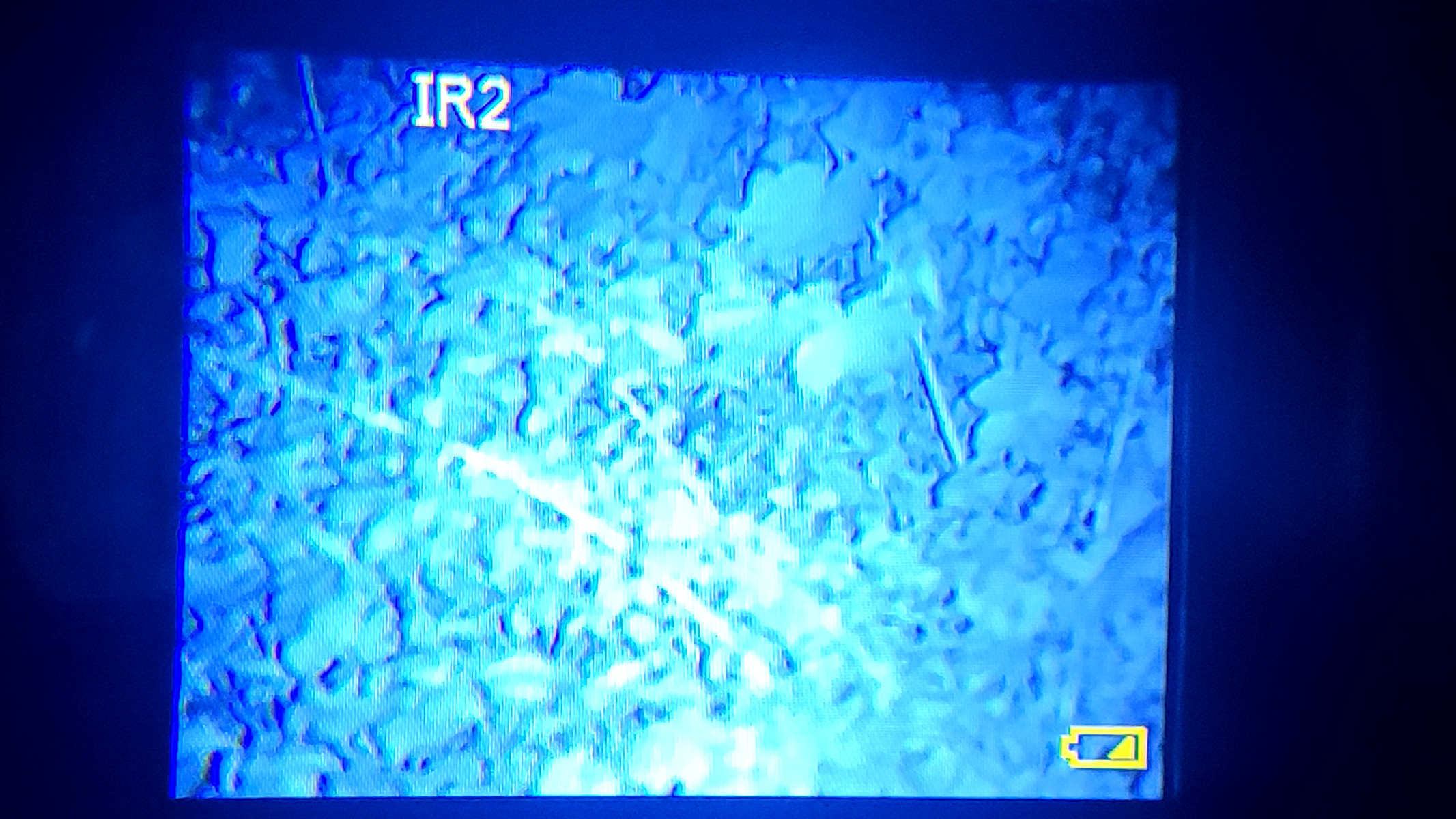
- The battery indicator is unreliable
- Screen is bright
- Image is sharp
There isn't a 'setup' process for these binos; the element that took the most time was finding eight batteries to begin the review! Once you've found them and popped them in, switch on the power button in the center of the device and look through the widescreen viewing monitor.
The night vision element (and that's why we're all here) is impressive for the price. They are by no means military standard or for anything other than spying on wildlife in your backyard or small park. The 3x fixed optical magnification and 2x digital zoom help you get closer to the action without disturbing the subject.
Comfort-wise, we've mentioned that the 100V doesn't sit quite as snug to your face as the Swift, so if using them as standard binoculars during the day or at dusk or dawn when there's still a fair amount of light, quite a lot of light enters at either side of the eye guard. That said, the gap allows you to use your peripheral vision, so you don't feel as disoriented as you do with the Swift. These are pretty heavy to hold up for any significant amount of time, so we'd recommend attaching the neckstrap to give your arms a break or using a tripod for extended use.
Nightfox 100V night vision binoculars: Functionality
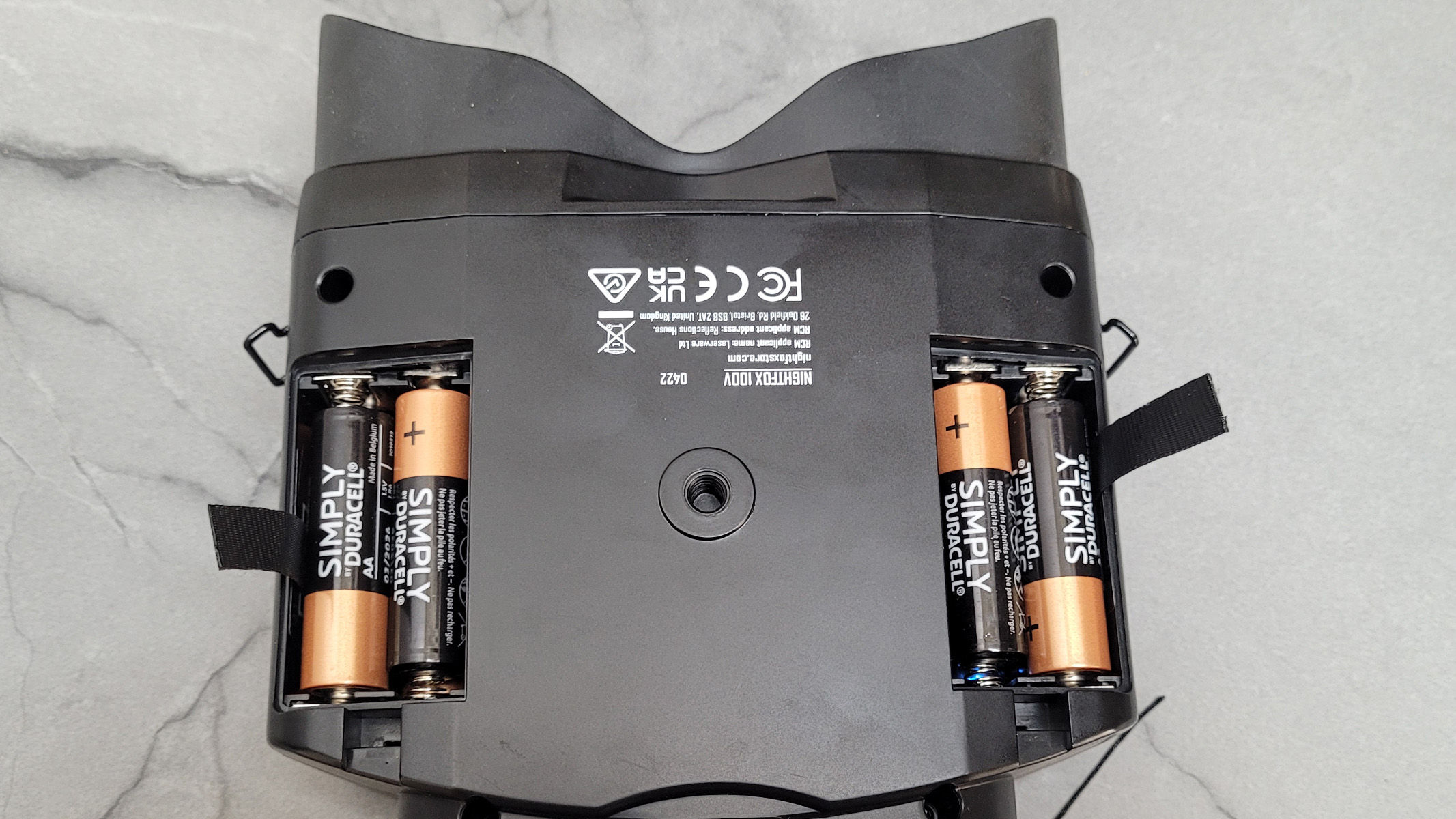
- 8x AA batteries required
- 3x magnification and 2x digital zoom
- No waterproof rating
There isn't too much functionality to speak of regarding these entry-level binos. The main function is to let you see in the dark, which they do.
The fixed optical magnification is 3x. We'd have preferred 1x, with a bigger digital zoom range, rather than having to use 3x as a minimum. Use the button on the right to activate the digital zoom (2x zoom) and the one on the left to adjust the infrared level. Use the focus wheel underneath to make the image nice and sharp.
The Nightfox 100V takes a whopping eight AA batteries; this is the worst thing about this model. That's a lot of expenditure on extra batteries — we recommend getting rechargeable ones with a rechargeable battery charger.
We did notice that the battery indicator was pretty unreliable too. We'd go out with a full charge, use it for a few minutes, turn the IR level up to IR7, and get a battery-low indicator. We'd turn the binos off and on again, and the indicator would show the battery as full. We'll need to experiment more with different AA batteries to determine if this is an ongoing problem. Still, definitely, during our initial tests, this was a repeating issue.
With no waterproof rating, we wouldn't recommend using these in anything other than dry weather.
Should you buy the Nightfox 100V night vision binoculars?
The Nightfox 100V is an affordable means of being able to see at night without using a torch or making yourself too obvious — a great way of observing wildlife in your backyard. They are so simple to use they would be a suitable gift for a young nature spotter to enjoy watching wildlife without disturbing it.
Providing you have, or will invest in rechargeable batteries, the fact that they aren't rechargeable isn't too much of an issue, especially if you use them for other toys and electronics around the house too. It just makes recharging a bit more laborious than plugging in a cable.
At the time of writing, you can pick these binos up for $59.99 on Amazon, $79.99 plus a $20 coupon.
If the Nightfox Swift Night Vision Goggles aren't for you
If you want a more rugged, weatherproof design or the ability to record video, you'll have to look elsewhere. We'd recommend the Creative XP Night Vision Goggles Elite. They cost significantly more, but sitting around the $250 mark they still won't wipe out your bank balance if you're looking for a good quality pair. They have a rechargeable battery and a huge viewing distance of 1300 ft, but they are also suitable for backyard spotting. You can record videos onto the 128GB memory card to share your findings with others too.
You'll see we've mentioned the Nightfox Swift throughout this view. Go for this model if you're looking for something that's head mountable (i.e. hands-free) and you don't need the extra magnification. Perhaps if you're developing photos in a dark room or walking along trails at night, once you've got used to the loss of your peripheral vision, you can experience night vision on the go with this lightweight solution.
For more information, check out our round-up of the best night vision binoculars that we regularly update with the best models as we find and review them.
Join our Space Forums to keep talking space on the latest missions, night sky and more! And if you have a news tip, correction or comment, let us know at: community@space.com.

Tantse Walter is a writer, photographer and travel enthusiast that has spent over a decade facilitating global adventurous expeditions. She loves getting into the nitty-gritty of sourcing and planning itineraries, getting out and about in nature, and admiring the night sky.
